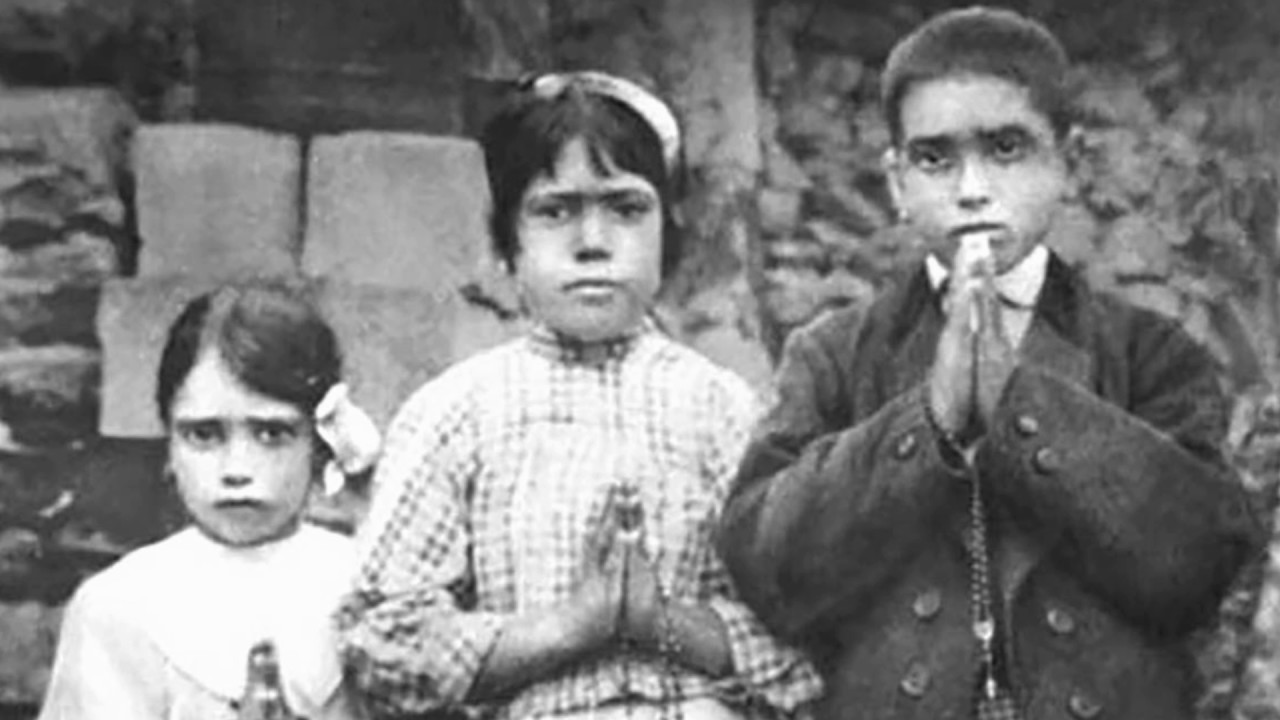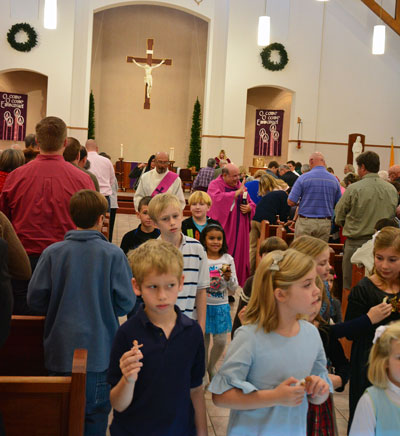
Fatima – Sept. 13, 1917:
The ridicule of the secular press increased the noonday crowd by a few thousand more than in August. The preliminary signs were increased. There was a sudden cooling of the air, dimming of the sun until stars were visible, rain resembling iridescent petals or snowflakes fell without reaching the ground. Then a luminous globe moved slowly and majestically from east to west.
After the preliminary emphasis on the rosary and the need for conversions, the “beautiful lady” promised that Our Lady of Sorrows and of Mount Carmel would come the following month as well as St. Joseph with the Child Jesus to bless the world with peace.
Having said that some of the sick would be cured but others not, she ascended as usual. The people had developed the endearing custom of waving their handkerchiefs in farewell to her, which continues to this day during processions with her statue at Fatima.
Why such emphasis on the rosary? Since it consists of the mysteries of Our Lord’s life, death and resurrection, it is the Gospel in meditative form. What is recorded objectively by the evangelists becomes personal by frequent remembrance.
St. Paul says in 1 Corinthians 1:24 that Christ is the wisdom and power of God. That means that each mystery of his life shares in that wisdom and power. St. John Paul II stated that meditation on these mysteries “unleashes” their power in our minds and hearts.
This is essential to the appreciation of the Holy Sacrifice of the Mass. Jesus concluded the institution of the Eucharist by saying, “Do this in memory of me.” Pope Francis in his 2017 Corpus Christi homily emphasized that “The Eucharist is the memorial of God’s love.” Some people say that they get nothing out of Mass. Are they there in memory of him?
The Hebrew scriptures exhort the people to remember the action of God in their midst, as in Psalm 77.11,12: “I will call to mind the deeds of the Lord; yes, I will remember your wonders of old. I will meditate on all your work, and muse on your mighty deeds.” That echoes what Moses had commanded the nation in Deuteronomy 4:10: “Forget not the works that your eyes have seen, and let them not go out of your heart all the days of your life. You shall teach them to your children and your children’s children.” Jeremiah 12:11 attributed the destruction of Jerusalem to this lack of “considering in their heart.”
But why a daily rosary? Pope Leo XIII answered this question in his 1892 document on the rosary, “The Christian is so preoccupied with life’s varied concerns and so easily distracted by futile interests that, unless he is frequently reminded, he little by little forgets the most important and most necessary things. Eventually his faith grows weak and even dies.” And this was before automobiles and airplanes, telephones and television.
The rosary is Mary’s maternal method, her school, of keeping the mighty works of her Son in our minds and hearts — making the Eucharist efficacious in our daily lives.
Father Stanley Smolenski, spma, is director of the Shrine of Our Lady of South Carolina in Kingstree and director of Marian programs for the Diocese of Charleston. He is a consecrated hermit. Email him at olscshrine@gmail.com.


